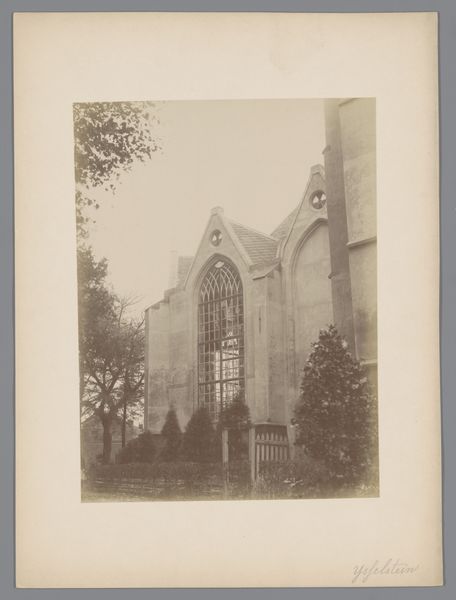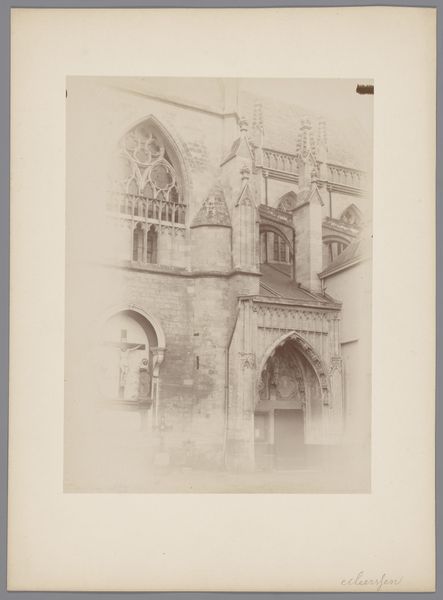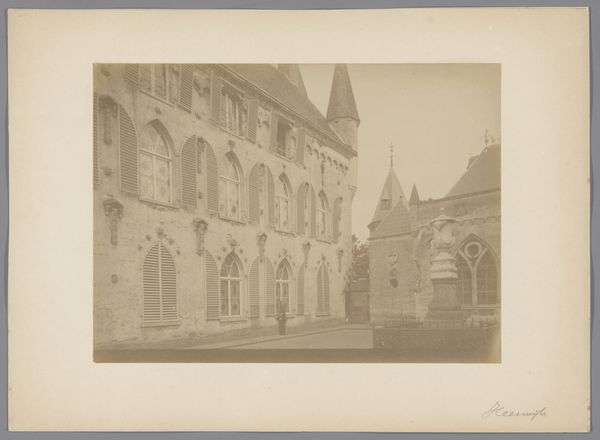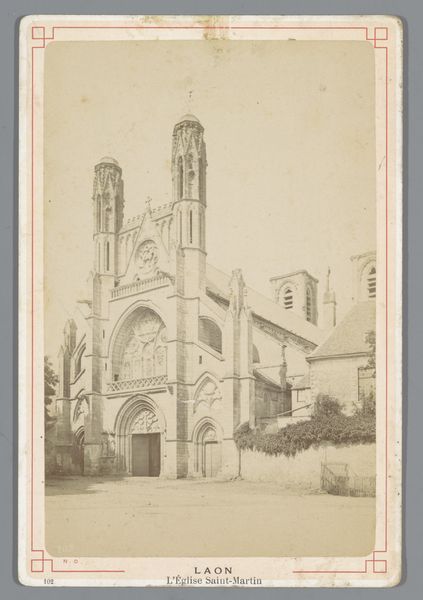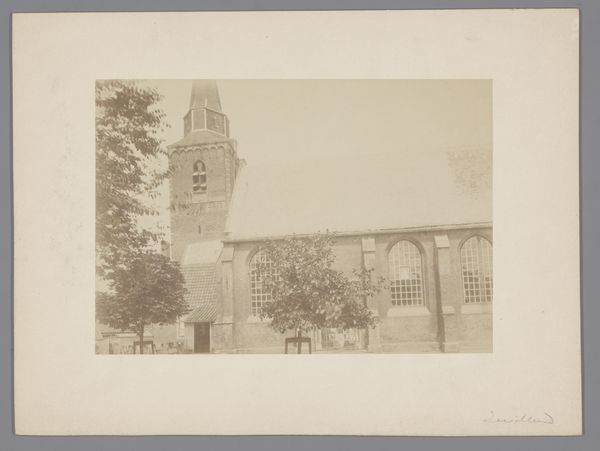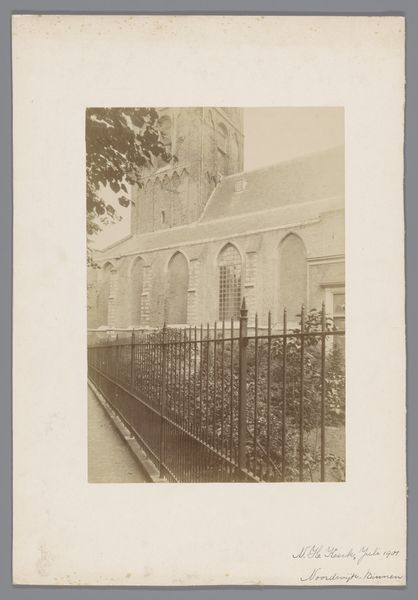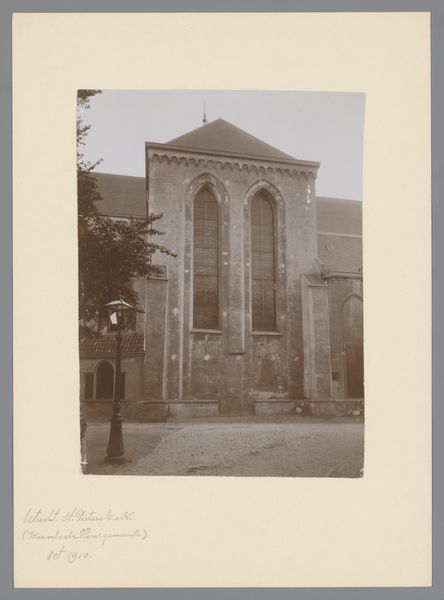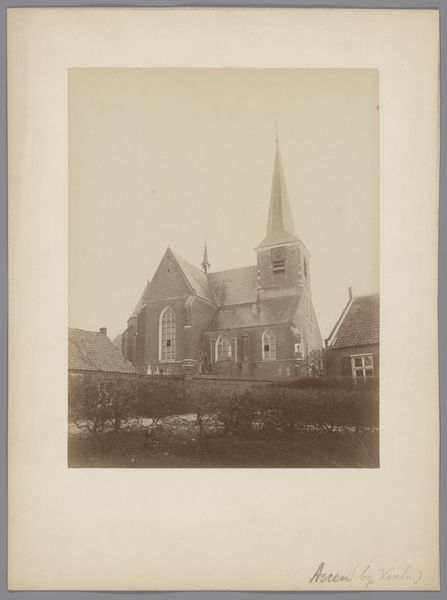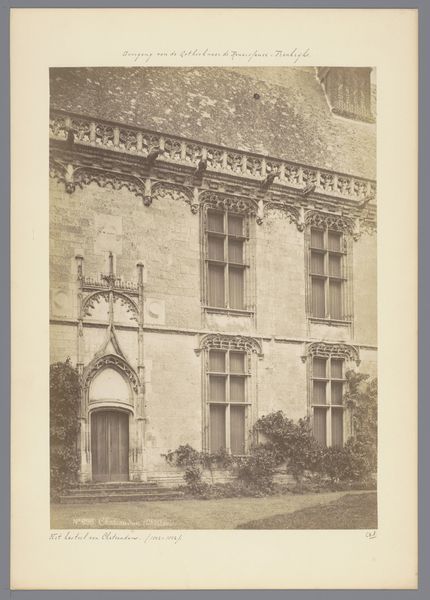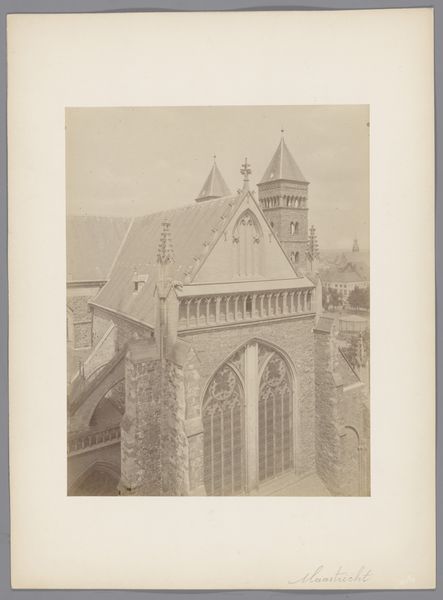
Gezicht op het zuidelijk portaal van de Sint-Servaasbasiliek Maastricht 1893
0:00
0:00
Dimensions: height 235 mm, width 170 mm
Copyright: Rijks Museum: Open Domain
Editor: Here we have a photograph from 1893 titled "Gezicht op het zuidelijk portaal van de Sint-Servaasbasiliek Maastricht," which translates to "View of the southern portal of the St. Servatius Basilica in Maastricht." It looks like an older gelatin silver print, judging from the color and texture. What really strikes me is how…austere it seems, despite the grandeur of the architecture. What’s your take? Curator: That sense of austerity speaks volumes. The Basilica, dedicated to Maastricht's first bishop, Saint Servatius, became an important pilgrimage site and a symbol of power. But this photograph, likely commissioned for documentation rather than glorification, subtly questions that power. It shows the building, but also highlights the cold, hard materiality of the structure. Who had access to this sacred space, and who was excluded? The framing, the starkness—it asks us to consider whose stories are centered in this narrative and whose are marginalized. Editor: That's a great point! I was focused on the architectural style and its age, but you’re right. It's also a question of access and representation. Does the angle play a role in that too, focusing on a side entrance, rather than the main facade? Curator: Exactly! This angle directs our attention to a specific, perhaps less celebrated, aspect of the basilica. What might have been happening at this southern portal in 1893? What sort of activities or social dynamics might this entrance have facilitated, compared to the main entrance? Photography, even in its nascent stages, had the power to challenge dominant narratives simply by shifting the point of view. Editor: I never thought about the choice of perspective carrying such weight! Thank you, this definitely shifts how I understand this image. Curator: And it also reminds us to always question what we are shown, and what is intentionally left unseen. It's about critically engaging with the visual records that shape our understanding of history and power.
Comments
No comments
Be the first to comment and join the conversation on the ultimate creative platform.

